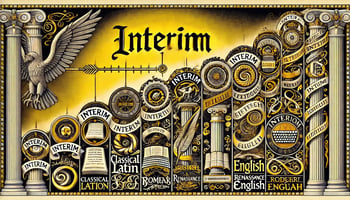Freelancing as a Senior Project Manager in Europe offers both flexibility and the potential for...
What is Waterfall Method in project Management
 In project management, the waterfall model is a linear and sequential approach to software development and project execution. It follows a structured and predefined set of phases, with each phase acting as a prerequisite for the next one. The waterfall model is named so because progress flows in one direction through these phases, much like a waterfall.
In project management, the waterfall model is a linear and sequential approach to software development and project execution. It follows a structured and predefined set of phases, with each phase acting as a prerequisite for the next one. The waterfall model is named so because progress flows in one direction through these phases, much like a waterfall.
The typical phases in a waterfall model include:
-
Requirements Gathering and Analysis: In this initial phase, project requirements are collected and analyzed in detail. This phase involves understanding the project scope, objectives, and constraints.
-
System Design: Once the requirements are established, the system architecture and design are planned. This phase involves defining the system components, data flow, interfaces, and other relevant architectural details.
-
Implementation: This is where the actual coding and programming take place based on the design specifications. It involves translating the design into a working system.
-
Testing: After the implementation phase, the system undergoes testing to ensure that it meets the specified requirements. Testing includes unit testing, integration testing, system testing, and user acceptance testing.
-
Deployment: Once the testing phase is successful, the system is deployed for use. This could involve installation, data migration, and other activities needed to make the system operational.
-
Maintenance and Support: After deployment, the system requires ongoing maintenance and support to address any issues, fix bugs, and implement changes or updates.
The waterfall model is known for its structured and disciplined approach, making it easy to understand and manage. However, it has some limitations, such as inflexibility to accommodate changes once the project is in progress. If there are changes or updates needed, it may be challenging to go back to a previous phase in the waterfall model.
Many modern project management methodologies, such as Agile, have gained popularity because they provide more flexibility and adaptability to changes during the project lifecycle, in contrast to the rigid structure of the waterfall model.
Let's delve deeper into the key characteristics of the waterfall model:
-
Sequential and Linear: The waterfall model follows a strict sequence of phases, and each phase must be completed before moving on to the next. This linear progression makes it easy to understand and manage the project's development, as each phase has well-defined goals and deliverables.
-
Document-Driven: The waterfall model relies heavily on documentation. Detailed documentation is created at each phase, including requirements documents, design specifications, test plans, and more. This documentation serves as a reference for the development team and as a basis for assessing project progress.
-
Minimal Customer Involvement Until the End: In the waterfall model, customer involvement is typically limited until the later stages of the project. Customers may not see the product until it is fully developed and tested, which can be a drawback if there are misunderstandings or changes in requirements.
-
High Risk of Inflexibility: One of the main criticisms of the waterfall model is its lack of flexibility. Once a phase is completed, it's challenging to go back and make changes without disrupting the entire project. This can be problematic if there are changes in requirements or if issues are discovered late in the development process.
-
Well-Suited for Stable Requirements: The waterfall model is most effective when the project requirements are well-understood and unlikely to change significantly. If there is a high degree of uncertainty or if requirements are likely to evolve, a more flexible approach like Agile might be more appropriate.
-
Phases Can Overlap (in some variations): While the traditional waterfall model is strictly sequential, some variations allow for overlapping phases, which is sometimes referred to as "iterative waterfall" or "incremental waterfall." In these cases, certain phases may start before the previous ones are fully complete.
-
Project Control and Management: The waterfall model provides a clear structure for project management and control. Progress can be easily measured against the completion of each phase, and resources can be allocated accordingly.
-
Not Ideal for Large and Complex Projects: The waterfall model may not be well-suited for large and complex projects where requirements are subject to frequent changes or where rapid development and delivery are crucial.
It's worth noting that while the waterfall model has its limitations, it can still be appropriate for certain types of projects, especially those with well-defined and stable requirements. However, many modern software development projects, particularly in dynamic and rapidly changing environments, often favor more flexible methodologies like Agile. Agile methodologies allow for incremental and iterative development, accommodating changes and feedback throughout the project lifecycle.



